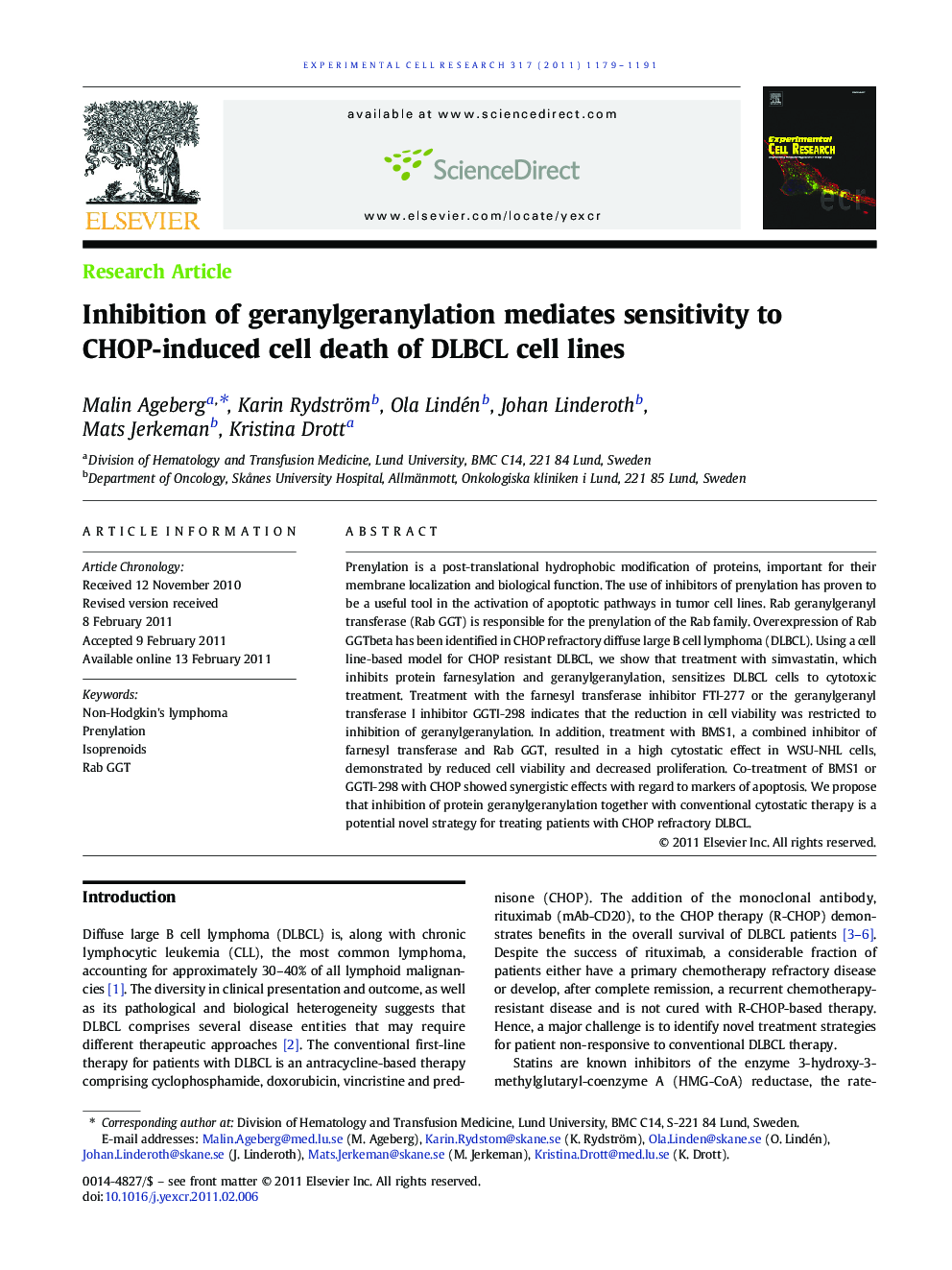| Article ID | Journal | Published Year | Pages | File Type |
|---|---|---|---|---|
| 10904610 | Experimental Cell Research | 2011 | 13 Pages |
Abstract
Prenylation is a post-translational hydrophobic modification of proteins, important for their membrane localization and biological function. The use of inhibitors of prenylation has proven to be a useful tool in the activation of apoptotic pathways in tumor cell lines. Rab geranylgeranyl transferase (Rab GGT) is responsible for the prenylation of the Rab family. Overexpression of Rab GGTbeta has been identified in CHOP refractory diffuse large B cell lymphoma (DLBCL). Using a cell line-based model for CHOP resistant DLBCL, we show that treatment with simvastatin, which inhibits protein farnesylation and geranylgeranylation, sensitizes DLBCL cells to cytotoxic treatment. Treatment with the farnesyl transferase inhibitor FTI-277 or the geranylgeranyl transferase I inhibitor GGTI-298 indicates that the reduction in cell viability was restricted to inhibition of geranylgeranylation. In addition, treatment with BMS1, a combined inhibitor of farnesyl transferase and Rab GGT, resulted in a high cytostatic effect in WSU-NHL cells, demonstrated by reduced cell viability and decreased proliferation. Co-treatment of BMS1 or GGTI-298 with CHOP showed synergistic effects with regard to markers of apoptosis. We propose that inhibition of protein geranylgeranylation together with conventional cytostatic therapy is a potential novel strategy for treating patients with CHOP refractory DLBCL.
Related Topics
Life Sciences
Biochemistry, Genetics and Molecular Biology
Cancer Research
Authors
Malin Ageberg, Karin Rydström, Ola Lindén, Johan Linderoth, Mats Jerkeman, Kristina Drott,
